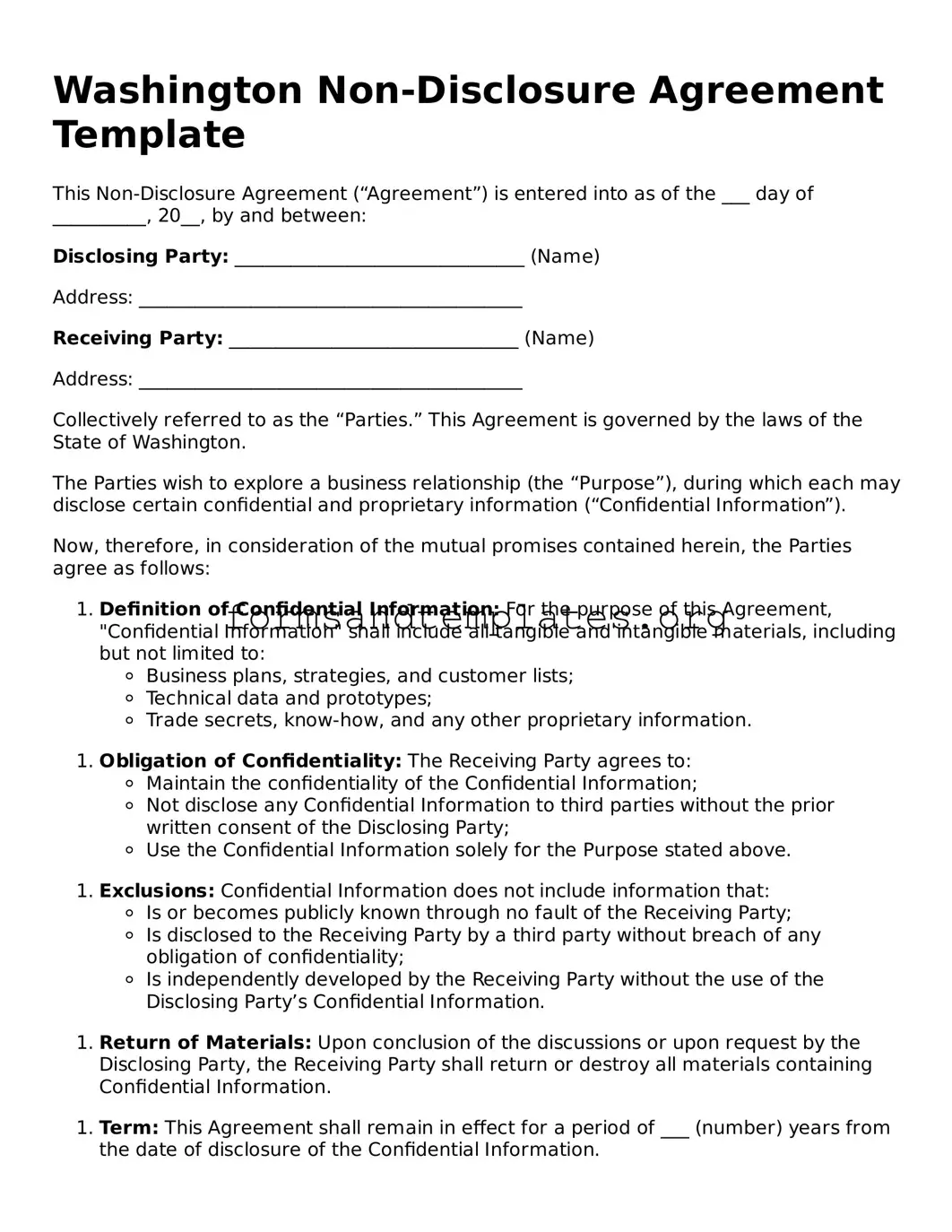Washington Non-Disclosure Agreement Template
This Non-Disclosure Agreement (“Agreement”) is entered into as of the ___ day of __________, 20__, by and between:
Disclosing Party: _______________________________ (Name)
Address: _________________________________________
Receiving Party: _______________________________ (Name)
Address: _________________________________________
Collectively referred to as the “Parties.” This Agreement is governed by the laws of the State of Washington.
The Parties wish to explore a business relationship (the “Purpose”), during which each may disclose certain confidential and proprietary information (“Confidential Information”).
Now, therefore, in consideration of the mutual promises contained herein, the Parties agree as follows:
- Definition of Confidential Information: For the purpose of this Agreement, "Confidential Information" shall include all tangible and intangible materials, including but not limited to:
- Business plans, strategies, and customer lists;
- Technical data and prototypes;
- Trade secrets, know-how, and any other proprietary information.
- Obligation of Confidentiality: The Receiving Party agrees to:
- Maintain the confidentiality of the Confidential Information;
- Not disclose any Confidential Information to third parties without the prior written consent of the Disclosing Party;
- Use the Confidential Information solely for the Purpose stated above.
- Exclusions: Confidential Information does not include information that:
- Is or becomes publicly known through no fault of the Receiving Party;
- Is disclosed to the Receiving Party by a third party without breach of any obligation of confidentiality;
- Is independently developed by the Receiving Party without the use of the Disclosing Party’s Confidential Information.
- Return of Materials: Upon conclusion of the discussions or upon request by the Disclosing Party, the Receiving Party shall return or destroy all materials containing Confidential Information.
- Term: This Agreement shall remain in effect for a period of ___ (number) years from the date of disclosure of the Confidential Information.
- Governing Law: This Agreement shall be governed by the laws of the State of Washington.
IN WITNESS WHEREOF, the Parties hereto have executed this Agreement as of the date first above written.
Disclosing Party: ________________________________________
Signature: _____________________________________________
Date: _______________________________________________
Receiving Party: ________________________________________
Signature: _____________________________________________
Date: _______________________________________________
